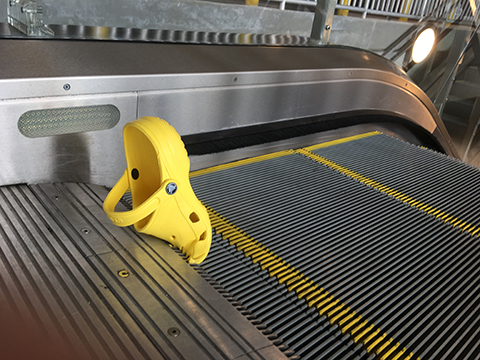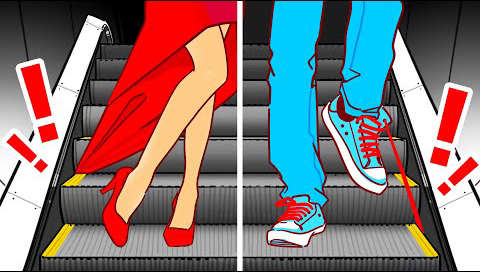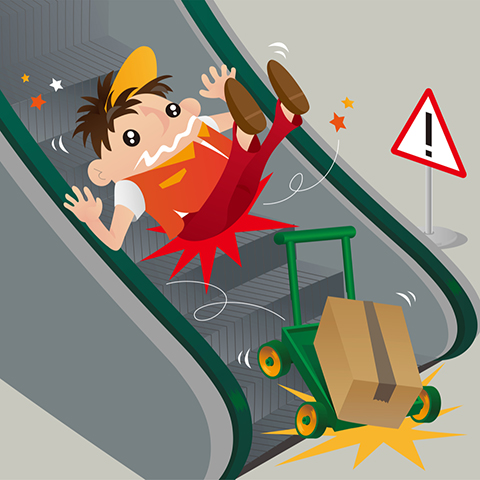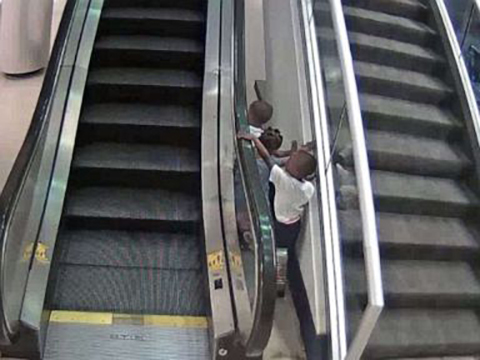As for escalators, everyone has seen them. In large shopping malls, supermarkets or hospitals, escalators bring great convenience to people. However, the current elevator is still an incomplete work of art. Why do you say this? Because the structure of the elevator determines that it is inevitable that it will cause harm to people.
In recent years, incidents of injuries in elevators have continued to occur across the country. Unfortunately, most of the victims are children. The reason is that in addition to the quality problems of the elevator itself, the main reason is children's improper behavior when riding in the elevator. After all, children have a low awareness of self-protection and a weak ability to save themselves when encountering harm.
We need to figure out which parts of the escalator are likely to cause harm to children. We have concluded that the "four gaps and one angle" of the elevator are most likely to cause harm to children.
Let’s first talk about the four “gaps” of the elevator. The elevator is moving, not stationary. This is why elevator "gaps" are dangerous. Just imagine, if a certain part of your body is caught in the elevator gap and then dragged away, it will definitely be very dangerous. Therefore, when children take the elevator, they should stay away from the "four gaps".
First.Gap between pedal and end comb plate
The name "comb plate" is very vivid, it is the part that looks like a comb. When a child stands too close to the comb board on the pedal, the gap between the two may involve the child's shoes or shoelaces, or cause the child to trip and become dangerous.
second.Gap between steps and apron board
According to relevant regulations, the horizontal gap between the apron board and the steps on either side should not be greater than 4mm. However, the child's fingers are 7 to 8mm thick, and his arms are even thicker. The reason for being caught in the gap is because the apron board is stationary and the steps are moving, which will cause The momentum pulls the child's fingers and even arms into the gap. In addition, some children like to lean their feet against the apron board when riding the escalator. If they accidentally get the toes of their shoes, shoelaces or trouser edges caught in the gap, their feet will be brought in.
third.The gap between the steps and the ground
When the elevator goes up or down to the last step, the human body is more likely to lose balance and fall. Once a person falls, shoes, hair, etc. are easily involved.
fourth.Elevator handrail groove clearance
The entrance of the handrail groove is wrapped with more than ten black rubber belts, and they are connected to the buttons under the escalator. When the child's hand reaches into the rubber belt, the connected button will be touched, so the escalator will stop immediately. Escalators have automatic protection functions and will automatically stop when encountering obstacles. However, the resistance when encountering an obstacle has a value, and the protection function will only respond when this value is reached.
fifth.The angle between the elevator and the building
There may be other buildings above the elevator. If you stick your head out of the elevator when the elevator is going up, you may be caught between the elevator and the building, causing huge damage.
The above "four gaps and one angle" are dangerous parts of the elevator. In other words, when we educate children to ride in elevators safely, we want them to avoid injuries to these parts. So what exactly do you do with your children?
01. Some elevators will have yellow lines drawn on the edges of the steps. Children should be asked to stand within the yellow lines. If there is no yellow line drawn, warn the child not to stand on the edge of the steps;
02. Position your feet farther away from the comb plate to prevent shoelaces and trouser legs from being rolled in;
03. Don’t wear long skirts that are too long, as they may get caught easily. In addition, do not wear softer shoes, such as Crocs, which were once all the rage. Because shoes that are too soft are easy to get pinched, and because they are not hard enough, the automatic stopping device of the elevator cannot be activated;
04. Do not place the handbags and other items you carry with you on the steps or handrails to avoid being involved in an accident;
05. It is forbidden for children to play and make noise in the elevator, to sit on the pedals, and to stick their bodies out of the elevator;
06. It is best not to push strollers and strollers up the escalator to prevent children from breaking away from the strollers and strollers and causing accidents.
As for the above bad habits of taking the elevator, if you have them, you can change them and if they don’t, you will be encouraged to do so. You can never be too careful when on an elevator. Finally, let me tell you what should we do if we encounter an accident in the elevator?
01. Press the emergency stop button as soon as possible
There is an emergency stop button at the upper and lower parts of each escalator. Once an accident occurs on the escalator, passengers near the button should press the button immediately, and the escalator will automatically stop with a buffer of 30-40 cm within 2 seconds.
02. When encountering crowding injury incidents
When encountering a crowding injury, the most important thing is to protect your head and cervical spine. You can hold your head with one hand and protect the back of your neck with the other, bend your body, don't run around, and protect yourself on the spot. Pick up the child as soon as possible.
03. When encountering an escalator going backwards
When encountering an escalator going backwards, quickly hold on to the handrails, lower your body to maintain stability, communicate loudly with the people around you, stay calm, and avoid crowding and stampeding.
Post time: Oct-30-2023






